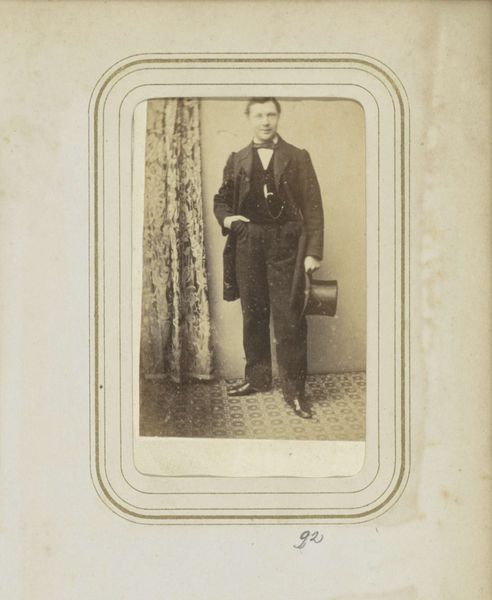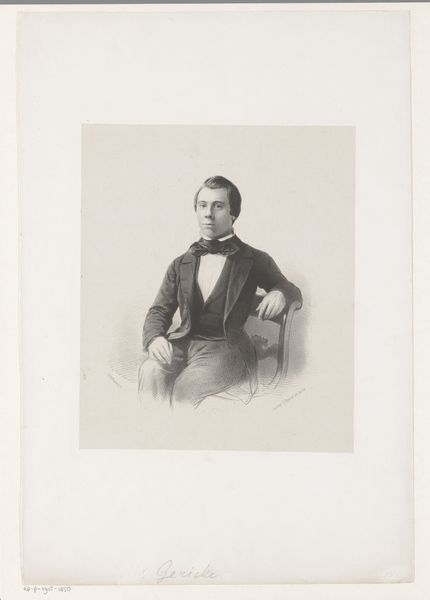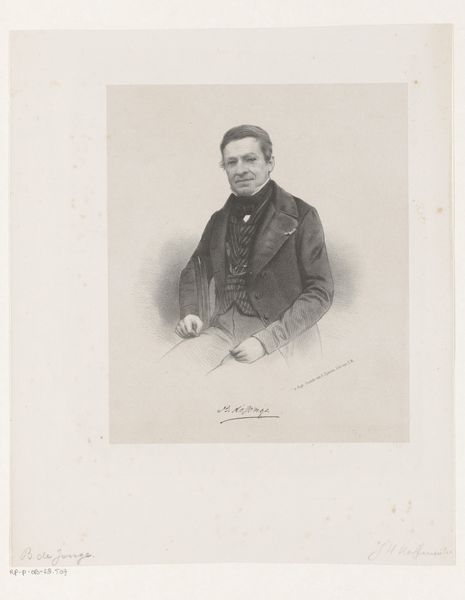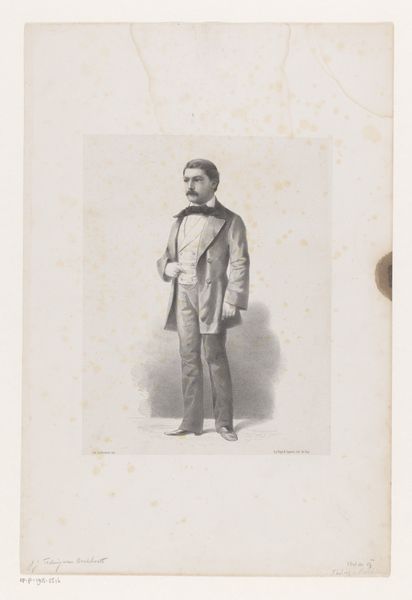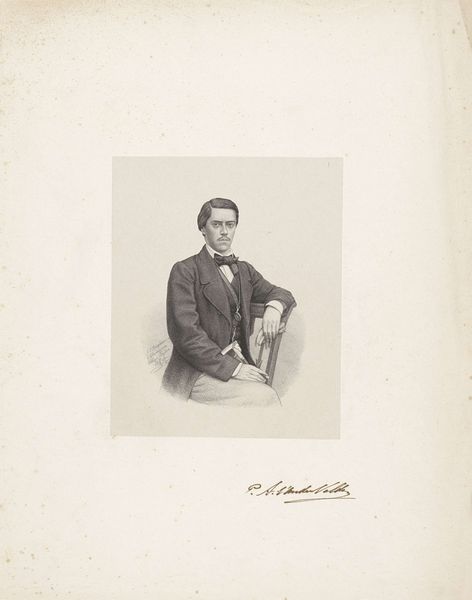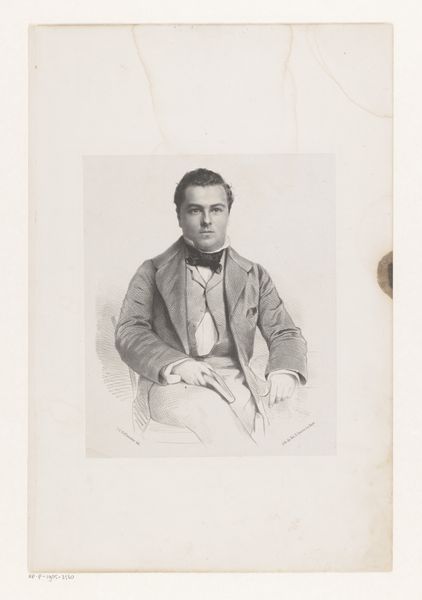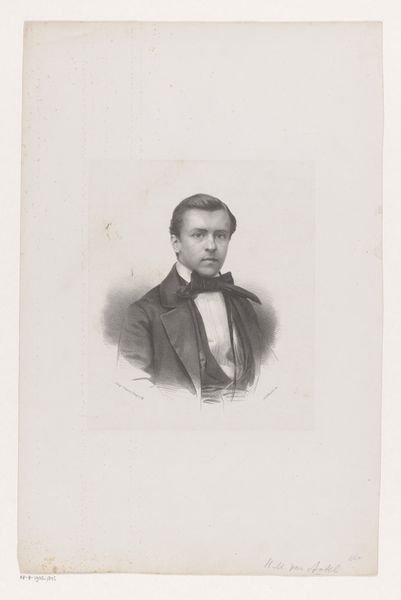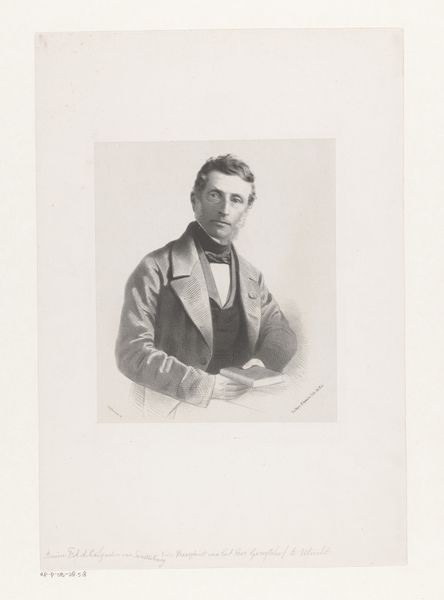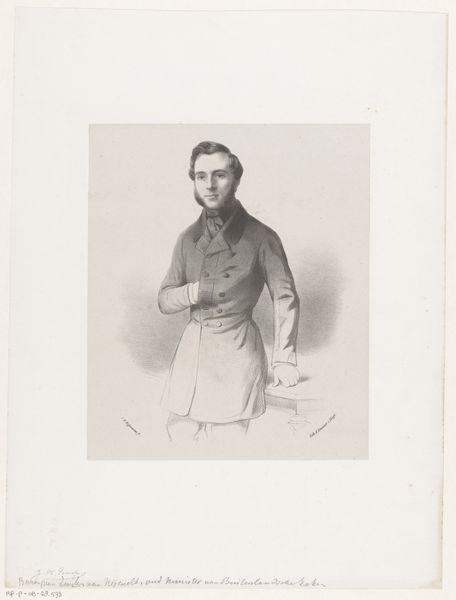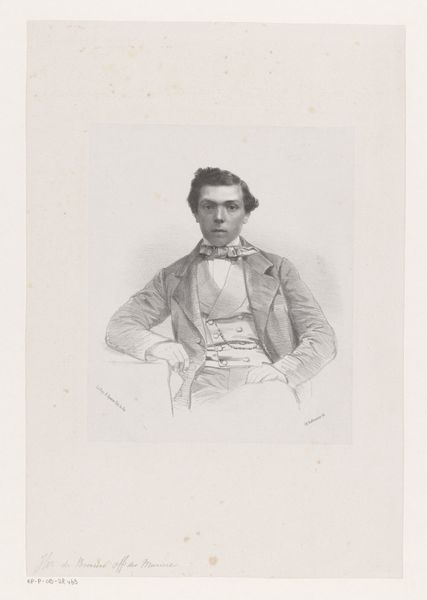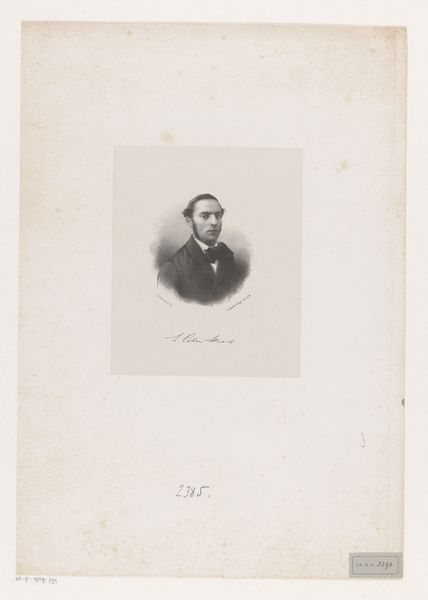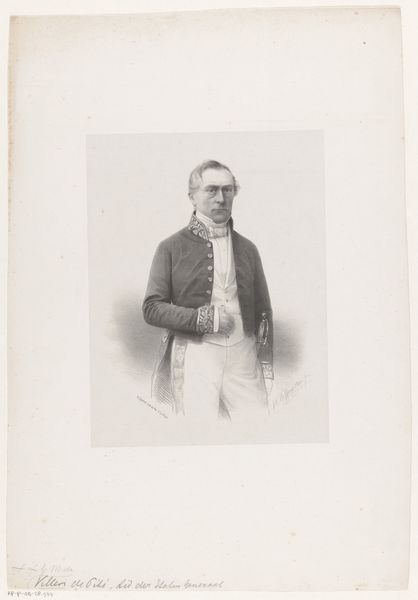
drawing, pencil
#
portrait
#
pencil drawn
#
drawing
#
light pencil work
#
pencil sketch
#
light coloured
#
pencil
#
academic-art
#
realism
Dimensions: height 495 mm, width 330 mm
Copyright: Rijks Museum: Open Domain
Curator: It's a bit melancholic, don't you think? There's something incredibly haunting in the delicacy of this drawing. Editor: Indeed. Here we have "Portret van Rauws," a pencil drawing created sometime between 1851 and 1883 by Johan Hendrik Hoffmeister. It's a study in realism and the academic style. Look closely at the way the artist captures the likeness, particularly with such simple means. Curator: The walking stick feels like an extension of the man, almost like a divining rod, connecting him to some unknown earth. And the draped table – a sort of stage set for a solitary performance. It invites introspection, doesn't it? What does it symbolize for you? Editor: Ah, yes, the symbols! The cane certainly signifies authority, but there is fragility too; perhaps this hints at a dependency on social standing. And that draped table – could be read as domestic comfort but it has a rather performative air. The lace implies status but it hides the plainness of the table. It conceals rather than reveals. Curator: It’s a quiet resistance. He looks poised, sure, but those eyes… there’s a vulnerability simmering. He wants to impress, maybe charm us a little bit with that carefully placed walking stick, with his perfectly buttoned up jacket, with this lace... yet that stillness says so much more. Editor: There’s a beautiful tension between aspiration and limitation expressed here. A deep reading exposes something sad, almost desperate beneath the sitter's buttoned-up respectability. But look at that carefully modeled vest! I think Rauws wanted to be perceived as important and prosperous! The portrait serves, I feel, as a coded cultural snapshot of a particular moment in time. Curator: What I admire most is its simplicity, the economy of line. It reminds me that profound truths often lie hidden in the smallest of details, or the negative spaces between them. It feels unfinished, raw, somehow like looking in the mirror. Editor: Yes. It's not merely a portrait of a man; it's a time capsule holding societal values and individual yearnings in delicate balance. What starts as an impression becomes something much deeper if we are willing to engage it. I like this portrait very much.
Comments
No comments
Be the first to comment and join the conversation on the ultimate creative platform.
